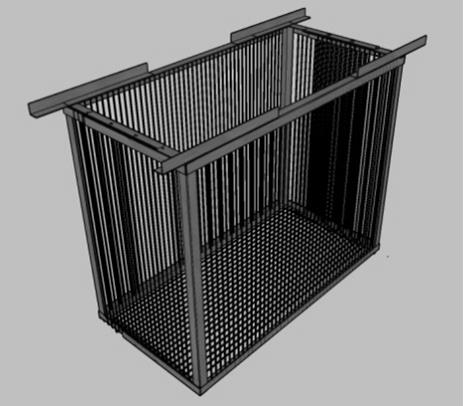EXPERIMENTAL STUDY OF THE EFFECT OF LENGTH OF HANGING BREAKWATER STRUCTURE ON WAVE TRANSMISSION
DOI:
https://doi.org/10.62012/sensistek.v5i2.24235Keywords:
Kata Kunci: Gelombang, Hanging Breakwater, Koefisien TransmisiAbstract
Breakwaters are highly effective breakwater constructions that can be used to protect harbor waters by interrupting wave energy coming from the deep sea. Widely used breakwaters today are of the pile type, both natural and artificial. The drawback of rock breakwaters is that they are large in size and therefore very expensive to issue. Therefore, a new type of breakwater is needed that is smaller in size and cheaper to build. One solution that can be applied is a suspended breakwater. The purpose of this study is to determine the effect of wave parameters on the coefficient of wave transmission through a suspended breakwater. The research was conducted at the Marine Technology Research Laboratory, Hasanuddin University. The parameters in this study were carried out with 5 variations of wave height, 5 variations of wave period (T), and 3 variations of model length (L). From the results of the research we have done, it can be concluded that the value of the transmission coefficient (Kt) is inversely proportional to the steepness of the wave (Hi/L). Figure 3 shows that when compared between model variations (L1 = 40 cm; L2 = 50 cm; and L3 = 60 cm) with depth conditions (d = 70 cm) and with period variations (T 1; T 1.2; T 1.5; T 1.8 and T2 s), it can be seen that the Kt value is lower in the third model variation, L3 = 60 cm with a value of 0.095 < Kt < 0.53.Downloads
References
Armono, H. D., 2004 ‘Artificial Reefs As Shoreline Protection Structures’, Seminar Teori Dan Aplikasi Teknologi Kelautan Iv, (III), Pp. 1–14.
Murali, K. And Mani, J., S., 1997 ‘Performance Of Cage Floating Breakwater’, Journal Of Waterway, Port, Coastal, And Ocean Engineering, 123(4), Pp. 172–179. Doi: 10.1061/(Asce)0733- 950x(1997)123:4(172).
Nining, S., 2002, Oseanografi Fisis, Kumpulan Transparansi Kuliah Oseanografi Fisika, Program Studi Oseanografi, ITB.
Rizqi, H., Haryo, D., A., And Sujantoko, 2010, ‘Studi Eksperimen Transmisi Gelombang Pada Pemecah Gelombang Terapung Tipe Pile’.
Triatmodjo, B., 2016, Perencanaan Bangunan Pantai . Beta Offset: Yogyakarta.
Triatmodjo, B., 1999, Teknik Pantai. Beta Offset: Yogyakarta.
Paotonan, C., Kasim, A. H. And Rahman, S. (2018) ‘Kajian Eksperimental Pengaruh Lebar Celah Relatif Pada Hanging Sheet Pile Breakwater Akibat Gelombang Tidak Beraturan (Irregular Wave)’, (September), Pp. 62–65
S. Rahman and T. Pairunan, “Wave Analysis Of Breakwater Building Structure In North Kalimantan”, Journal of Maritime Technology and Society, vol. 1, no. 1, pp. 26-32, Feb. 2022.













